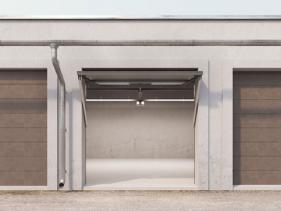Welcome to Vehicle Storage Tips
If you need to store your car you want to make sure it is going to come out in the same condition as you put it into storage.
Short or long term storage there are things we need to think about.
Storage location
Choose a safe and dry building to house your car during the winter.
A home garage, can work just fine if you have the space.
If you don’t have a garage or the spare space to store your vehicle, look for a storage facility that has a concrete floor, not bare earth like in an old barn.
The storage facility does not need to be climate controlled but should not have excessive moisture.
Make sure it has good security so your prize possession is looked after
Check engine oil
Pull the dipstick to check the engine oil.
If it is really dirty and you’ve reached the mileage limit, change it before storage.
The most important factor with engine oil is kilometres used.
Modern oil, especially synthetic, is stable for a year in the engine.
Also check that other fluid levels, especially anti-freeze, are topped up including fuel.
3. Wash and clean
Before parking your car for the final time, wash and fully detail it to ensure there are no contaminants left on the surfaces for the duration of the storage period.
Take some photos with a date tag just in-case you think you find damage later on.
5. Tyres
At the storage facility, inflate your tires to the maximum PSI rating (indicated on the sidewall).
This will prevent the tires from developing flat spots.
It is not necessary to remove modern radial tires and it is not advised to put a car up on blocks and leave the suspension hanging for an extended period of time.
Leave the car in neutral with the parking brake disengaged.
Automatic transmission cars can be left in park otherwise block tires to prevent moving.
The car should be parked on a level surface.
6. Ventilation
Roll down the window an inch to allow air circulation and prevent moisture from building inside the cabin.
7. Battery
Opinions vary but you may want to take the battery out and keep it on a trickle charge at home or if the storage unit allows connect it there.
Some newer cars require that the battery stay connected at all times to preserve the computer’s memory. In this case, it’s okay to connect the trickle charger to the battery while keeping the hood ajar to run the cables into the engine bay.
8. Pest prevention
Rodents love to find their way into your car and make it their cozy home during the winter.
This can wreak havoc if they chew wires.
Check that the storage facility has a pest prevention system in place.
9. Cover
Use a high quality tight fitting cover that will allow the car to breath.
10. Other considerations
Inform your insurance company:
Most classic car policies do not allow the option to temporarily suspend part of the coverage.
Leave it be:
A lot of people think starting a car every few weeks during storage is a good idea.
Unless you intend on taking the car for a good drive, simply letting it idle is actually detrimental because condensation will build through the various systems and not properly burn-off "this depends on storage duration".
Getting Back in Action
Here's a checklist of what to do when you're ready to bring your vehicle out of storage:
- Check under the hood for any evidence of rodents. Look for chewed belts, hoses, wires or nests. If you covered the muffler or air intake, remove that material before you start the car.
- Check the windshield wipers to see if the rubber is cracked or brittle.
- Check the tire pressure and inflate the tires to the recommended specs.
- Check the brakes. Rust may have accumulated on the rotors. In most cases, it should go away after you drive the vehicle for a short time.
- Check fluids to make sure there have been no leaks and that they are at the recommended levels.
- If the battery cable has been disconnected, make sure that you reconnect it and that the battery terminals are clean.
- Wash your vehicle to remove any dirt that may have accumulated.





